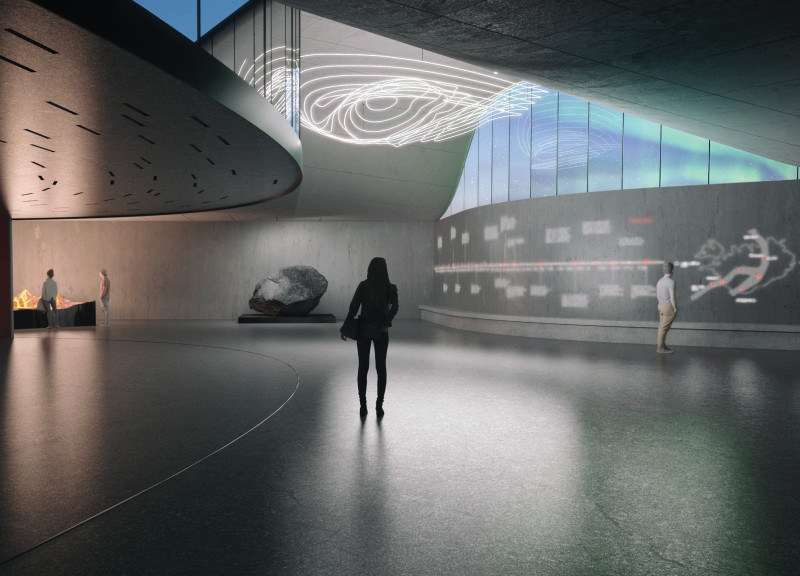5 key facts about this project
The museum consists of a series of interconnected volumes designed to mimic the geological formations of the surrounding landscape. The structure integrates large glass facades that provide transparency, enhancing visibility both into and out of the building. This feature allows natural light to flood the interior spaces, creating a dialogue between the visitors and the external environment.
Innovative Design Approaches with Natural Inspiration
One of the defining elements of the design is its curvature, which reflects the movement of tectonic plates. This approach not only serves aesthetic purposes but also defines functional spaces within the museum. Specific areas such as exhibition halls and educational zones are designed as fluid entities, allowing for flexibility in how exhibits are presented. The sinuous layout fosters exploration, guiding visitors through a curated path of learning about Iceland's geological phenomena.
Material selection plays a critical role in the project. The use of concrete and glass is strategic, providing structural integrity while also delivering an energy-efficient building envelope. The glass surfaces reflect the changing light of the Icelandic environment, elegantly interacting with the landscape. Steel components in the roof structure support the dynamic design while offering durability and resilience against harsh weather conditions.
Educational and Experiential Spaces
The internal layout is organized to enhance visitor engagement. Key areas include spacious exhibition halls that feature interactive displays, showcasing the science behind volcanology. Multi-media installations designed to provide immersive experiences are strategically placed throughout the museum, ensuring visitors can explore various facets of volcanic activity.
The careful circulation design is reminiscent of the tectonic 'crack' from which the project draws inspiration, guiding visitors through the thematic zones effectively. Pathways are designed to create visual connections between interior and exterior spaces, allowing for panoramic views of the surrounding volcanic landscapes.
The Volcano Museum exemplifies how architecture can seamlessly integrate educational functions with environmental context. This approach ensures that visitors leave with a comprehensive understanding of the volcanic forces that shape not only the landscape surrounding the museum but also the broader geological narrative of Iceland.
For further exploration of the architectural plans, architectural sections, and architectural ideas behind the design of the Volcano Museum, readers are encouraged to delve into the project presentation for a more detailed analysis.


























